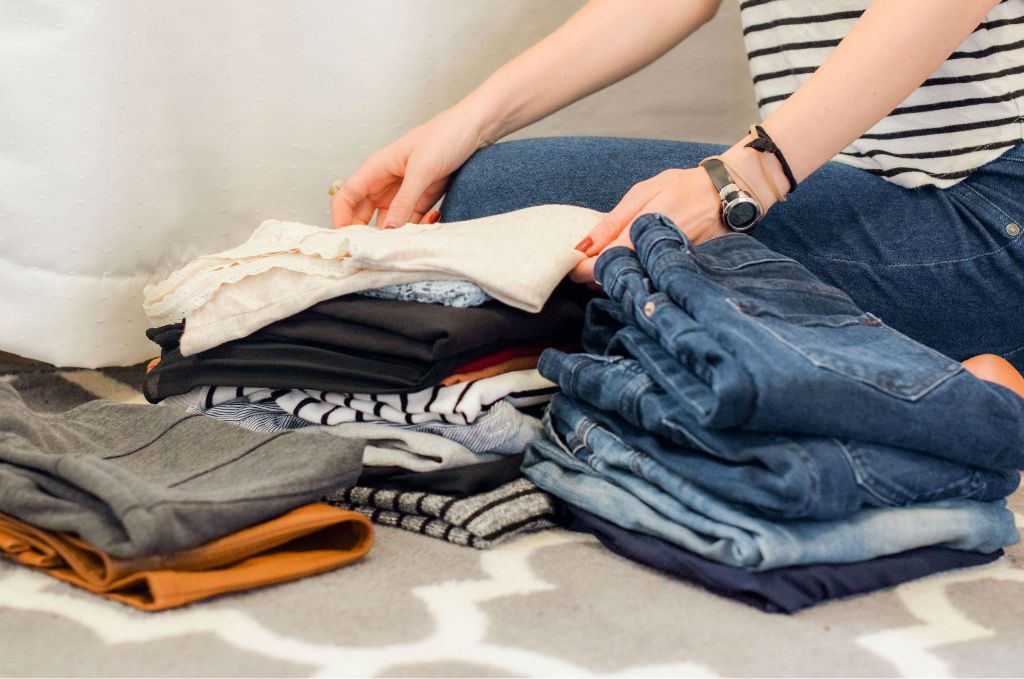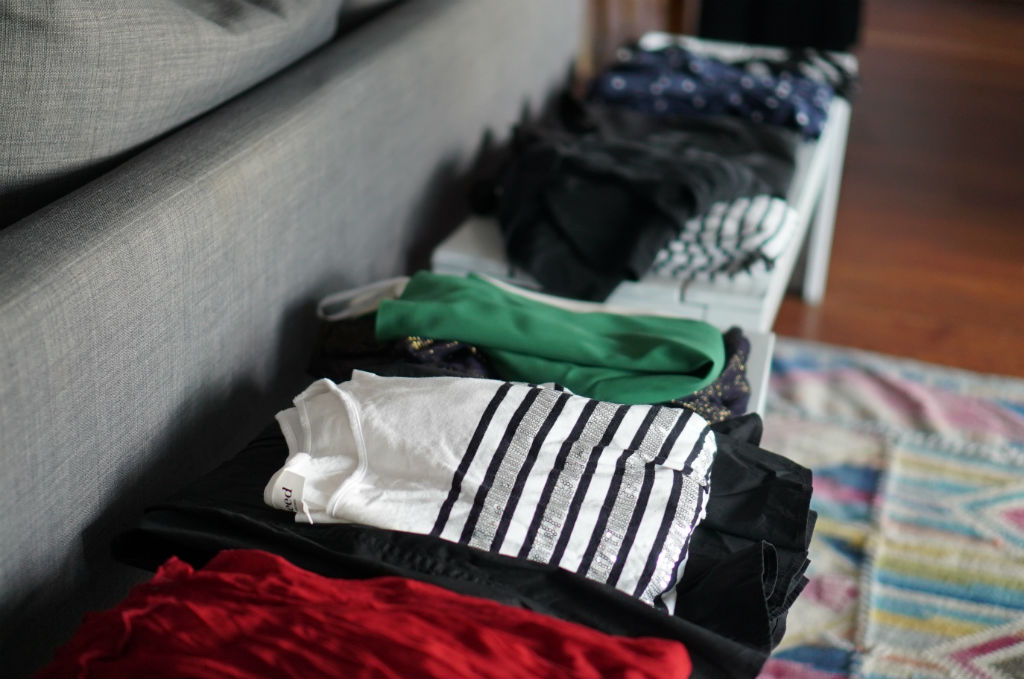If you’ve noticed an influx of #buynothingnew and #shopsecondhand on your socials, you would be aware of some of the ways shoppers are looking to reduce their environmental impact and more specifically, that of their wardrobe’s. The movement to wardrobe minimalism is one part of the solution to lowering our impact on the planet, but it’s not the only way to be more sustainable in your fashion consumption.
The fashion industry contributes about 5% of total global carbon emissions, more than aviation and maritime combined. That’s a product of a very extensive and intricate supply chain – from fabric production to manufacturing to shipping and even washing your clothes at home. The good thing is it presents many different ways of reducing the environmental impact of our clothes – from washing our clothes less (yay!) to buying natural fibres, and buying second hand. Here’s a list of things you can do to lower the environmental impact of your wardrobe.
1. Buy less
Globally, the fashion industry churns out more than 100 billion garments every year, about 14 garments per person. In the US, the average person takes home closer to 70 garments every year. Australia’s not far behind them as one of the biggest consumers of fashion in the world. The fast fashion model of cheaply made, designer rip offs results in massive amounts of waste, water and electricity usage.
As a shopper, a simple way to reduce our impact is to shop more mindfully and reduce the number of garments we buy. In turn, the resources required to produce the clothing goes down and less clothes end up in landfill. Ta-da!
2. Buy second hand
Another easy way to save clothing from landfill and extend the life of a garment is to buy second hand. Studies estimate that by purchasing second hand and extending the life of a garment by about nine months helps to reduce the garment’s carbon, water and waste footprints by around 20%-30% each.
Second-hand clothing availability is no longer restricted to op shops and vintage stores. Facebook Marketplace, Gumtree, Ebay, Depop and many more platforms are making it easy to swap and sell second-hand clothing. There’s also dedicated second-hand stores with well curated collections of clothing and regular suitcase rummages in cities around the world.
3. Buy natural or recycled fibres
Synthetic fibres such as polyester and nylon aren’t exactly helping fashion’s environmental problems. The oil-based fibres release toxic chemicals into the environment in the process of production, and shed thousands of plastic microfibres throughout their life which ends up in waterways, harming sea life. A single T-shirt can shed up to 1900 microfibres every time its washed.
Instead, opt for natural fibres such as cotton, linen, silk, or sustainably produced cellulose fibres like Lenzing’s Modal or Tencel fibres. Recycled nylon and polyester are also a good option to lower the environmental impact of the production process of the fabrics and reduce waste, however these garments will still shed microfibres. Microfibre washing bags can be used to avoid this.
4. Mend more
Think a garment is on its last legs? Dropped a button or pulled a seam? Don’t throw it away. The practice of mending may be a little lost of the current generation but it’s an easy act to pick up and will help to keep your garments feeling fresh for longer. There are endless tutorials on Youtube for almost every clothing fix necessary and most of them require minimal tools (ie. a needle and thread). Worst case scenario, it’ll be in good enough condition to drop at the op shop (see 7).
5. Make more
There’s no better way to truly appreciate the art of making clothing than by making a garment yourself from start to finish. From the fabric purchasing (ie. cost), to cutting, sewing and finishing – the process is a great way of understanding the elements of a garment and the true cost of making clothing.
Making clothing yourself at home ensures your clothes are made ethically and made to last. You can make clothes you know you’ll love and tailor them to fit you perfectly. There’s a great saying that ‘loved clothes last’ and it’s certainly true when you make them yourself.
6. Swap with friends
Another fun way to lower the environmental impact of your wardrobe is to swap and share clothes with your friends rather than buying new. Clothes swaps are an awesome opportunity to refresh your wardrobe without spending a single cent. I’ve put together a guide to hosting a clothes swap in your home here.
7. Donate your pre-loved goods
Keeping garments out of landfill is the ultimate goal, so giving your old clothes a new home is super helpful. Op shops are overrun with second-hand clothes but they still want your donations, especially if they’re quality garments that have been well looked-after.
Tip: Op shops don’t have the ability to wash your clothes or mend them, so if you are considering donating your old garments, make sure they’re in good enough condition to wear.
8. Get your wash cycles down
Did you know that the majority of a garment’s electricity usage actually happens after you purchase it? That’s right, when you take your garments home, wear them and wash them, that’s where the real impact happens. An easy fix? Take some advice from Magic Dirt and leave your jeans for a few months (or years!) before washing them. You can air your clothes out regularly or even spot clean.
9. Shopping online? Get it right the first time
Transport is a big factor when it comes to the industry’s impact. The environmental impact of delivery alone has prompted fashion movement Fashion Revolution to run an awareness campaign, Highway Fitting, in an effort to bring shoppers’ attention to the impacts of online shopping. The short film says a staggering 40% of all clothes bought online are sent back – the effects of which are felt in transport emissions but also felt by the retailers who are often left with damaged or unsaleable goods that end up in landfill. As a shopper – you can avoid this by ensuring you order the right size the first time. Get out the old measuring tape, read the reviews, and get to know the brands you shop.
10. Don’t buy at all
Serious about cutting your fashion carbon footprint? Set yourself a goal to buy nothing at all (for your wardrobe) for a year or so. It’s surprisingly relieving to free yourself from brand emails and sales and other forces telling you to buy constantly. You’ll be forced to be more creative with the clothes you have but you’ll save money and dramatically reduce your environmental impact.






